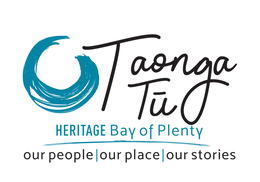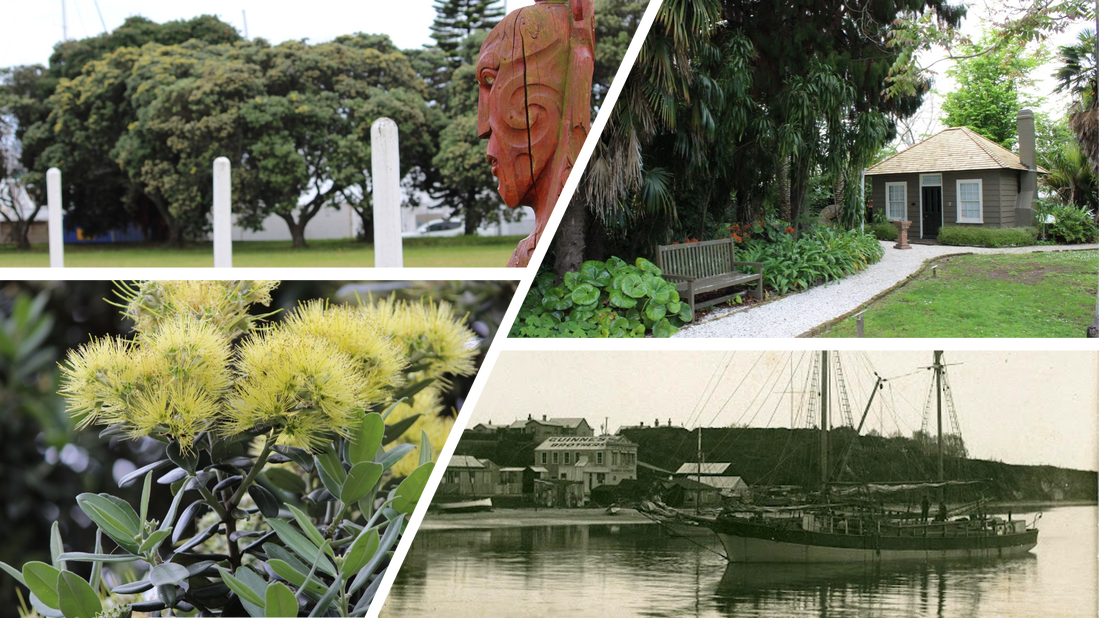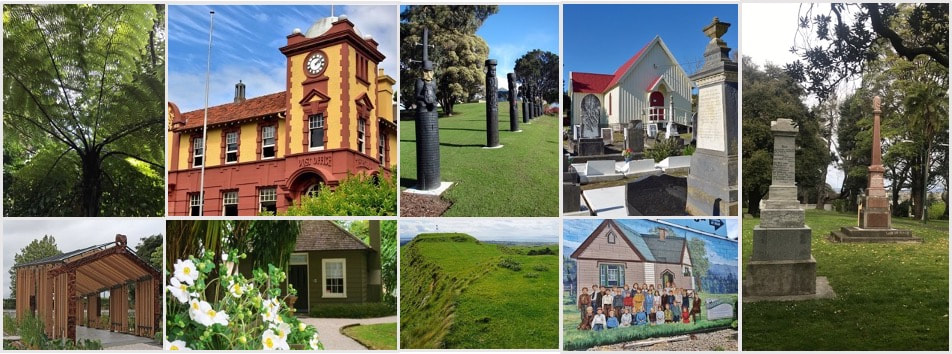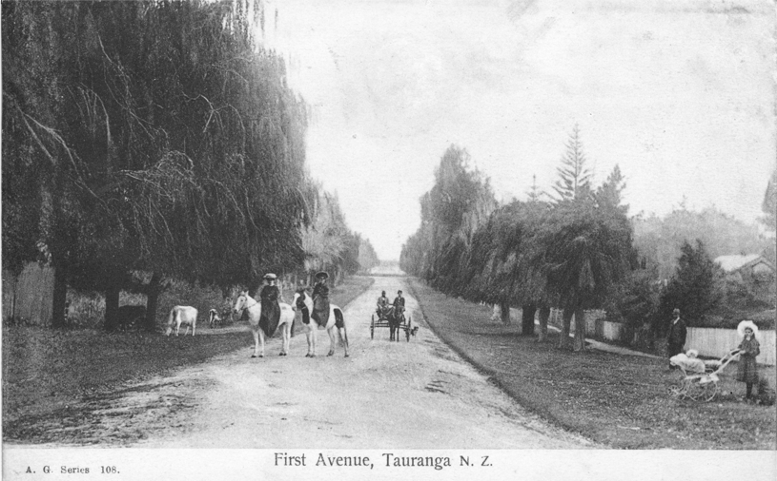|
PLEASE TAKE OUR SURVEY to help connect our Western Bay of Plenty heritage These are just four peeps of seventy-two heritage sites between Sixth Avenue and Te Pari o Te Awanui | Sulphur Point, Tauranga
[Kāpehu Whetū | Celestial Compass, Te Pari Taha o Te Awanui | Sulphur Point, Tauranga (est. 2005) Way-finding is how the first people to explore the Pacific Ocean navigated without instruments. In 2005 Jack Thatcher, CNZM, one of Aotearoa New Zealand’s most renowned celestial navigators, used the skills he had learnt over many years studying the ancient form of navigation to create the first Celestial Compass in New Zealand at Te Pari Taha o Te Awanui | Sulphur Point in Tauranga. The Celestial Compass has four poupou (carved posts) that face north, south, west, and east. Between them are plain posts that represent the 28 Polynesian ‘houses’ of the full horizon. Represented is the entirety of the environment, including the stars, Sun, Moon and ‘houses’ on the horizon between the sea and sky. The History of the yellow pohutukawa (1940) Planted along the laneway beside the Kāpehu Whetū | Celestial Compass at Te Pari Taha o Te Awanui | Suplhur Point is the yellow pohutukawa or 'Metrosideros excelsa Aurea'. This species is as rare as it is beautiful. It is believed to be descended from a pair discovered in 1940 on Mōtiti Island in the Bay of Plenty. Flowering season November. The Elms Library | Mission Street, Tauranga (est. 1839) The Brown family were still living in a raupō whare when Rev. Alfred Brown completed the library in 1839, now the oldest free-standing library in New Zealand and the first permanent structure on the site. In Brown’s diary he records ‘painting the library’ on the 18th and 19th of November 1839. 1,000 beautifully bound books include practical manuals on how to grow crops of various kinds, medical books, encyclopaedias and religious tracts, letters, pamphlets, family records, Brown’s personal papers and his daily journal. Meetings with important figures were held here, and a trapdoor in the floor leads to an underground hiding space in case of attack during the Musket Wars (1818-1842). Worried about the damp affecting his books, Brown added a chimney in 1844. Visit The Elms | Te Papa The Bond Store | 1 The Strand, Tauranga (est. 1886) A steep footpath leads down from Taumata-Kahawai | Monmouth Redoubt to the oldest remaining commercial building in Tauranga. The Bond Store is listed by Heritage New Zealand as a Category 1 Historic Place and is one of the few remaining in New Zealand. The bonded warehouse is a reminder of Tauranga’s reliance on sea freight, being built in 1883 for James Alexander Mann who used it for storing imported goods on which customs duty had to be paid. The brick construction was a novelty, but a wise choice given the fires that had previously destroyed much of the town. Before reclamation, the Bond Store was located on the waterfront near to the two town wharves. Later, retail store Mann & Co., sold hardware, furniture, machinery, tools, groceries, liquor, and tobacco. In 1908 Mann sold the business, and three years later the property, to Guinness Bros., who established themselves as an important local supplier, especially of agricultural goods. In 1986 wine and spirits dealers Hughes & Cossar took over the property; followed by Saunderson Packaging, Tulloch Photography (1987-1997), Creative Tauranga, Number 1 The Strand Restaurant and Bar (1999), and SunLive Media where they are today. Help us to shape the heritage map for the Western Bay of Plenty. Let YOUR voice be heard - have YOUR say - take our survey - and help our region on its heritage journey.
From the 13th century countless footprints from Tangata Whenua, through European, Asian and Pacifica settlement have been laid throughout our region; each telling diverse and often harrowing stories which reverberate today. Alongside, inspiring and uplifting stories also resound. Sadly, few know these stories or how they became interwoven over time in dramatic, strange and often wonderful ways that will inspire our future generations. Since 1873 all attempts by local government to establish a regional museum or heritage centre that represents all has been fraught with highly documented political, social, and financial controversy. Let's avoid history repeating itself. The focus must now come from our diverse Western Bay of Plenty community that today is home to many differing ethnicities. To have real chance of success, and to encompass our diversity while working to Te Tiriti values and principles, our regional heritage initiatives need to be independent in nature and structure. They need to be about all the people living and working in abundant Western Bay of Plenty which includes Tauranga city. For more information, please contact our strategic communications partner, The Shine Collective, who are assisting us in creating a community-led Western Bay of Plenty Heritage Strategy. |
AuthorTaonga Tū | Heritage Bay of Plenty advocates for a community driven Western Bay of Plenty Heritage Education Centre and are in the process of developing the Western Bay of Plenty Heritage Strategy. When COVID allows, we offer heritage programmes towards increasing awareness and understanding for the abundant heritage across our region from its beginnings in the 13th century through the inclusion of many cultures into the 21st century. Archives |
HOME
ABOUT: Our Team | Ōtamataha Pā | Taonga - our treasure | Our brand story
WHATS ON: Exhibitions | Past Events | Videos
DISCOVER: Our Tāngata whenua | Early Tauranga | Waihi Beach | Katikati | Mauao - the legend | The Kaituna | Te Puke | Maketu - magic
OUR HERITAGE: Heritage Collection | Heritage Gallery | Battles of Gate Pā & Te Ranga | The Apology | St George's Gate Pā | The Elms |
Historical Society | Tauranga Jazz Festival History | Maori Proverbs | Heritage Organisations | Archives | The Golden Years
HERITAGE FRIENDS
CONTACT
ABOUT: Our Team | Ōtamataha Pā | Taonga - our treasure | Our brand story
WHATS ON: Exhibitions | Past Events | Videos
DISCOVER: Our Tāngata whenua | Early Tauranga | Waihi Beach | Katikati | Mauao - the legend | The Kaituna | Te Puke | Maketu - magic
OUR HERITAGE: Heritage Collection | Heritage Gallery | Battles of Gate Pā & Te Ranga | The Apology | St George's Gate Pā | The Elms |
Historical Society | Tauranga Jazz Festival History | Maori Proverbs | Heritage Organisations | Archives | The Golden Years
HERITAGE FRIENDS
CONTACT
Content Copyright Organic Living Ltd © 2022






 RSS Feed
RSS Feed
